The most obvious new feature of Apple TV is its ability to rent iTunes movies, including a new selection of HD flicks that turned up on the iTunes Store in the last 48 hours. Here's a look at how Apple's rental solution prices out against rival services in terms of prolonged cost, as well as a comparison of picture quality of Apple's HD downloads when viewed side-by-side against other high-def content sources such as HD Cable and Blu-ray.
The HD Download Market
The closest competitors to Apple TV's movie downloads are Vudu, Amazon's Unbox partnership with Tivo, and the Xbox 360 tied to Microsoft's Xbox Live online service. All of these offer movie downloads at a price comparable to a rental store, and all have the same 30 day rental term with a 24 hour window once you begin watching the movie. All but Unbox/TiVo offer HD content. HD content takes far longer to download, however, making a fast Internet connection critical for users who want to watch HD downloads.
All of these system use hardware with a native 720p display system except for the Vudu, which appears to have a higher 1920 x 1080 internal native resolution. However, resolution really isn't as much of a factor because downloads simply lack the bandwidth to deliver 1080p content without compressing the signal to the point where the extra resolution is overwhelmed by compression artifacts. Vudu's 720p content is already heavily compressed, and it only offers a small selection of 1080p titles, so its hardware advantage primarily just makes the unit more expensive.
Vudu currently has the largest selection of SD movies (~5000) and a growing selection of HD titles. Amazon has a significant library but no HD offerings yet. Apple opened its movie rental business with 1000 titles and has about 100 HD titles available. Microsoft only has a few hundred titles available for download, with a select number of them in HD. Next to its fledgeling Apple TV rental business, however, Apple also sells and rents SD movies from iTunes for use on PCs, iPods, and iPhone. That should help establish volume sales and drive the company's movie library quickly. Well over a hundred million people use iTunes with the iPod, while TiVo, Vudo, and the Xbox 360 combined only add up in the low tens of millions.
Vudu hit the ground running first, but has been forced to drop its hardware price from around $400 to $295 to compete with Apple TV. Since Apple intentionally runs its iTunes Store at only a slight profit in order to provide content for its hardware, Vudu's expensive hardware cut suggests big problems for the startup, as it will be forced to compete in media sales against a low profit or loss leader business going forward.
Amazon appears to have no problem competing in the cheap content market; it is currently undercutting Apple in music prices by a slight fraction and matches Apple's movie rental prices. Amazon relies upon TiVo to supply its hardware, and TiVo is supported in part by its own subscription fees. However, Amazon's partner has been losing tens of millions of dollars every quarter, so that arrangement might not last long either.
Microsoft runs its movie download business as an afterthought for the Xbox 360, which is focused on games. The company has not sold a significant fraction of the market's TV or movie downloads, and its hardware sales are down dramatically year over year. After hitting its peak in 2006, sales of the Xbox 360 nosedived by over 33% last year, as noted in Video Game Consoles 2007: Wii, PS3 and the Death of Microsoft’s Xbox 360. Whether Microsoft will continue to dump money into the Xbox and particularly the non-gaming side of its Xbox Live service remains to be seen.
In addition to these hardware-centric offerings, there are also three other major movie rental download services, Cinema Now, MovieLink, and Vongo, which are all tied to Windows Media DRM on a PC. Apple has been competing against these three studio-owned businesses, and rapidly outpaced them last year despite the limited appeal of iTunes' SD movies, a lack of any rental options, and no HD offerings. As presented in Apple TV Digital Disruption at Work: iTunes Takes 91% of Video Download Market, Apple began 2007 with 40% of the paid movie download market and essentially all of the paid TV market, and ended with around half of the online movie business and no real competition for TV sales.
That means while Apple is just starting to get serious about Apple TV, it should have no problem with growth in the rental business as other companies such as NetFlix ineffectually scramble to enter the downloads market with PC-only playback and no hardware partnerships in place. Netflix plans to introduce an Apple TV competitor with LG, but that product has not yet been finished.
Of all the set top hardware and PC-centric download services, only Apple has any effective mobile strategy. While Microsoft has an iPod competitor and a smartphone platform to rival the iPhone, it hasn't put together any workable strategy for moving media seamlessly between any of them in the way Apple has. Everyone else is even further behind or has expressed no interest in mobile markets.
Competition from HD Disc
Outside of the download market, Apple TV's movie rental business faces competition from optical disc formats, both the entrenched DVD and the aspiring Blu-Ray and the remains of HD-DVD. All three formats have a luxury of bandwidth that Apple TV— and every other download service— lacks. Even the decade-old DVD delivers a 9.8 Mb/sec data signal; many US households only have a 1.5 Mb/sec connection to the Internet, and the fastest service usually peaks out around 6 Mb/sec.
Despite that advantage, Apple TV can compete well against DVD because that format uses the older MPEG-2 compression. Movies from iTunes use MPEG-4 H.264, which is roughly twice as efficient. That means iTunes can push near DVD-quality video in real time to users with a fast Internet connection, and with a streaming delay, can even deliver HD quality video that bests DVD.
The Blu-Ray format can pump out 36 to over 200 Mb/sec of data, which simply can't be matched by downloads. While the first wave of Blu-Ray discs used MPEG-2, newer titles are beginning to use the same efficient compression that download files use. This enables Blu-Ray to deliver 1080p video and specialty HD audio tracks using much less compression and subsequently more picture clarity and audio fidelity.
However, to appreciate that data stream users will need an HDTV set that has a native 1920 x 1080 resolution. Unless a set specifically advertises 1080p native output, it will automatically display Blu-ray video at a lower 720p resolution, or 1280x768. Further, seeing the difference in resolution between 1080p and 720p requires a set larger than about 50 inches. That reality has effectively pushed HD disc formats such as Blu-Ray into a high end niche similar to the failed DVD-Audio and SACD that were intended to replace CDs with a new audiophile quality disc format.
The market for HD discs turned out to be so small that the two rival formats couldn't coexist. HD-DVD is now all but dead, and Blu-Ray has yet to see widespread adoption. Consumers have instead been buying upconverting DVDs, which present standard definition discs as pristinely as possible on new HDTVs at a much lower cost. There is also a lot more content on DVD; Blu-Ray only has around 350 titles.
The great advantage of HD discs is also paired with its largest drawback: they are physical media that need to be stored and moved around slowly. Renting discs requires traveling to a video store or signing up for a subscription to a service like Netflix. This can compare well in price with download services, particularly for frequent renters, but also limits users to a set of three options for immediate viewing and requires them to set up a queue of titles and wait a day or two for delivery. This difference helps to make Blu-Ray disc and download services like Apple TV more complementary and overlapping than directly competing. A Blu-Ray player also can't access individual TV episodes or other features that Apple TV provides.
On page 2 of 2: Competition from Cable and Satellite HD; Cost Comparisons; and Picture Quality Comparisons.
The third major competitor supplying HD content is cable and satellite vendors. They can rival the bandwidth available to download services, but rather than providing content on demand and billed a la carte, they sell subscriptions to as many channel feeds as they can carry. In order to deliver as many channels as possible, they heavily compress their signals, defeating their bandwidth advantage.
While cable providers are moving toward on demand services, they typically only have around 300 movie titles available for viewing. Like the download services, they commonly use the 720p HD format, although some also use 1080 interlaced, which delivers a similar effective resolution as 720p.
Gaining access to the channel-oriented delivery of cable and satellite providers commonly requires a DVR to sift through the channels and grab desired content for later viewing. This makes cable a sort of middling offering between the NetFlix-like subscription rental model for physical discs and the Apple TV model for downloading content on demand. Cable and DVR have some of the weaknesses of both: delayed satisfaction and bandwidth limitations that require compromising on quality.
Cost Comparisons
For users who watch occasional movies up to a couple films a week, Apple TV is among the cheapest options even considering the upfront cost of buying the hardware. For users who plan to watch a movie every day, the cost of $4 or $5 rentals from download services adds up quickly, highlighting the value of an all you can eat service like Netflix. At the same time, there are barely 300 HD movies currently available in any format, from either downloads or discs. To watch one every day, you'd have to literally watch everything.
This chart (below) shows a comparison of first year costs, which include any hardware purchases required , and second year costs, which only involve rental and ongoing subscription fees. Highlighted numbers indicate the cheapest options for users watching two movies per month, two per week, or a one every night of the year. Many users will likely mix and match services rather than picking one exclusively. This tends to favor Apple TV, which not only offers a cheap and convenient way to download occasional HD movies, but does a lot of other things that competing systems don't do.

Picture Quality Comparisons
Apple TV stacks up pretty well just considering the convenience and cost advantages it provides. Given the bandwidth limitations inherent with movie downloads, it would seem hard to believe that Apple TV's HD downloads could compete with Blu-Ray in terms of quality. Gizmodo invented a quality timeline that put VHS at 1 and Blu-Ray at 10, and arbitrarily placed HD cable at 7 and Apple TV at 5. However, Charles Starrett of iLounge took screen shot photos that indicate that scale actually needs to tip in favor of Apple TV.
The article Apple TV 2.0 vs. Blu-Ray, DVD & HD Cable: The Comparison presents a variety of still and action shots comparing an upconverted DVD, HD cable, Apple TV, and Blu-Ray disc played by a PS3. In static images, Apple TV's HD downloads were sharper and more defined than upconverted DVD and less pixelated than the noisy, highly compressed HD Cable, although still softer than Blu-Ray.
These examples from Live Free or Die Hard zoom in to exaggerate detail; a viewer on the couch wouldn't see as much of an overall difference; Starrett noted that "because of its cleaner motion and audio, we felt that the Apple experience was better in both overall audio and video quality than the HD cable experience, and for most users, superior to renting a standard DVD as well"
In motion sequences, Starrett wrote that the Apple TV download "exhibited little in the way of motion blur or compression artifacts—it looked as good as could be expected from 720p, which is to say comfortably better than DVD quality, but shy of the best a Blu-Ray Disc can offer on a top TV. The Apple TV video also contained a Dolby Digital 5.1 surround audio track, which the HD cable version did not, and its sound didn’t suffer from obvious compression issues like the cable version did."
The example photos he took indicated that Apple TV's HD clips could closely rival Blu-Ray, and where much better than the noisy upconverted DVD and far superior to the pixelated, heavily compressed HD cable version. In addition to having better audio than cable, Apple TV also presented the movie in its normal theatrical screen format; the cable version was presented as an open matte, which fills up the screen but is not accurate to how the director intended to present the film.
As we presented in the previous installment, the encoding quality performed by the studios that submit their content to download services like iTunes can vary greatly. Individual DVDs and Blu-Ray discs can also vary in quality between movies depending how much effort was put into the mastering process. HD cable providers also get varying levels of quality in the content they deliver, but their distribution systems rely so heavily on compression to serve up quantity rather than quality that heavy artifacting and muddy sound are pretty much a given.
It seems pretty clear that Apple TV's HD quality is decent enough to compete against the technically superior HD disc formats and also improves over upconverted DVD. It also offers convenience and price advantages for casual renters that make it a compelling alternative to disc players. Add in the fact that Apple TV does a whole lot more than just rent movies, and it's clear why Apple invested so much into revising the unit.
Where to buy Apple TV
Apple TV 40GB (MacMall) $217.28 (reflected at checkout)
Apple TV 160GB (MacMall) $314.28 (reflected at checkout)
Apple TV 40GB (Amazon.com) $229
Apple TV 160GB (Amazon.com) $329
Apple TV 40GB (OnSale.com) $224.00
Apple TV 160GB (OnSale.com) $324
Apple TV 40GB (B&H Photo) $229.00
Apple TV 160GB (B&H Photo) $325.00
Apple TV 40GB (Buy.com) $227.63
 Prince McLean
Prince McLean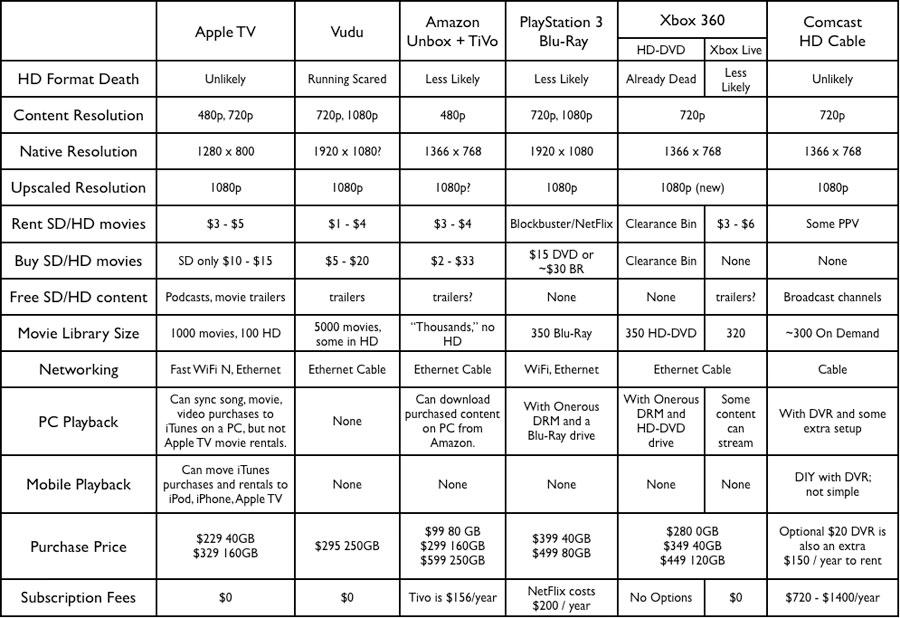
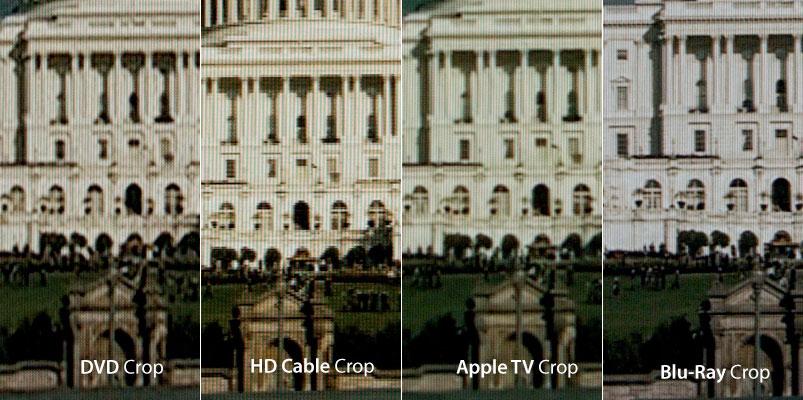
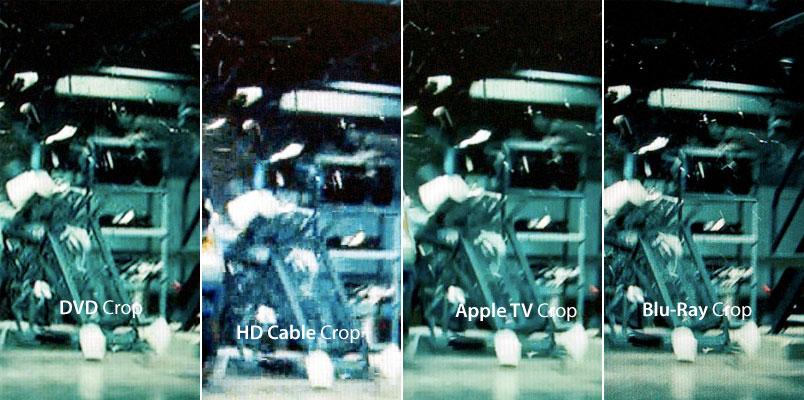


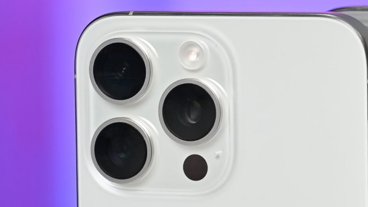
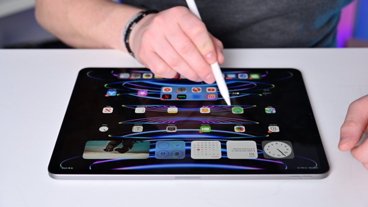



-m.jpg)






 Malcolm Owen
Malcolm Owen
 Mike Wuerthele
Mike Wuerthele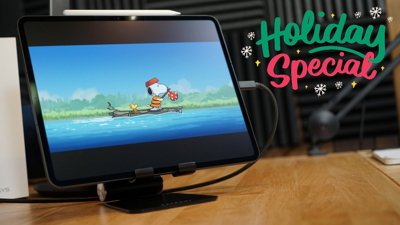
 Christine McKee
Christine McKee
 William Gallagher
William Gallagher
 Sponsored Content
Sponsored Content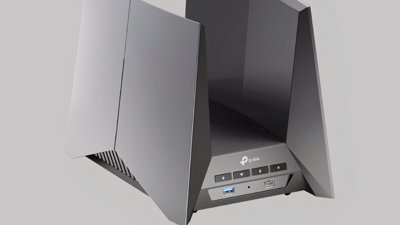

 Wesley Hilliard
Wesley Hilliard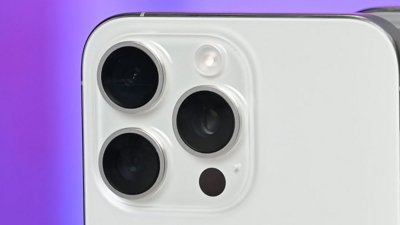
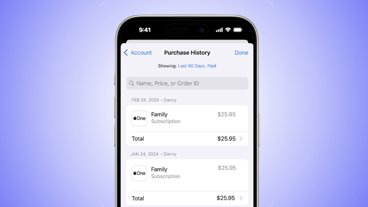
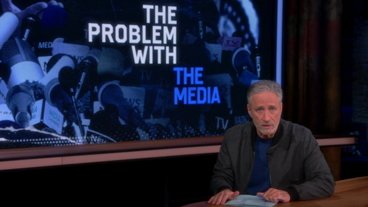
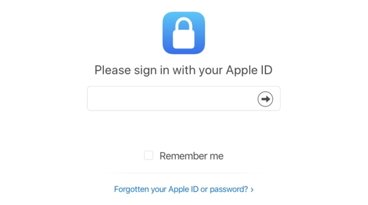


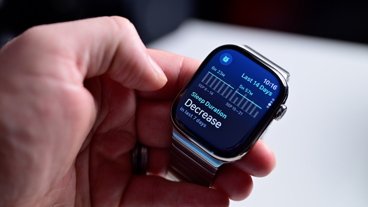




97 Comments
Thank you, excellent article.
Please studios -let us buy your HD movies from Apple.
Hey- Toshiba- get your HD DVD studios to let Apple sell all their content on iTunes at least if Sony and the Blu-Ray studios won't. I just feel that renting is like throwing money out a window.
Finally....
That will stop some people from whining about Apple TV HD quality in earlier topics posts.
Finally....
That will stop some people from whining about Apple TV HD quality in earlier topics posts.
I stand corrected about Apple TV HD vs. Cable HD. (Although since I have FiOS, it would be interesting to see a comparison to that.)
However, despite the prose descriptions to the contrary, the images pretty clearly show that AppleTV HD is much closer to upconverted DVD than to Blu-ray HD.
However, despite the prose descriptions to the contrary, the images pretty clearly show that AppleTV HD is much closer to upconverted DVD than to Blu-ray HD.
I'd agree with that. In the pic of the White House I'd even say the up-converted DVD looked slightly better than the AppleTV stile if given a blind test. Some cable companies still use MPEG-2 for their digital content. So until they change this there HD content will continue to be poor.
I don't think we'll see the complaining end. They will find something else to bitch about or put a spin on the article that attempts to invalidate it.